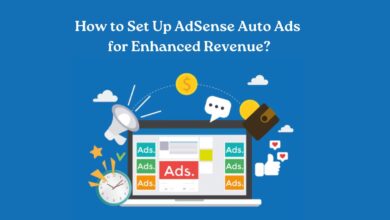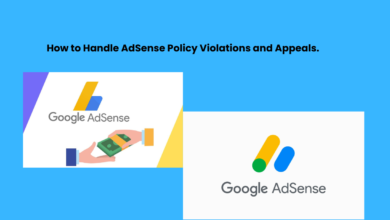Incorporating AdSense Link Units for Additional Revenue Streams

Monetizing your website effectively is essential for any online venture looking to generate revenue. While banner ads and sponsored content are commonly utilized methods, AdSense Link Units offer a unique and potentially lucrative avenue for increasing your income stream. These units, provided by Google’s AdSense program, can be seamlessly integrated into your website’s design, offering relevant advertisements to your audience. In this guide, we’ll explore the how-to of incorporating AdSense Link Units, the reasons why they can boost revenue, potential challenges, and an overview of what AdSense Link Units are.
What Are AdSense Link Units?
AdSense Link Units are ad units provided by Google AdSense that display a list of topics relevant to your content. When users click on one of the topics, they are shown a page of related advertisements. These units offer a non-intrusive way to present ads, blending seamlessly with your website’s design while providing additional revenue opportunities.
How to Incorporate AdSense Link Units
1. Sign Up for AdSense:
If you haven’t already, sign up for Google AdSense and get your website approved for displaying ads.
2. Generate Ad Code:
After approval, navigate to your AdSense account and generate the ad code specifically for Link Units.
3. Customize Ad Appearance:
You have the option to customize the appearance of the Link Units to match your website’s design seamlessly.
4. Place Code on Your Website:
Insert the generated code into your website’s HTML where you want the Link Units to appear. Ensure it’s in a location that gets good visibility without overwhelming your content.
5. Monitor Performance:
Regularly monitor the performance of your AdSense Link Units through your AdSense dashboard. Experiment with placement, design, and targeting options to optimize revenue.
Why AdSense Link Units Boost Revenue
1. Relevant Ads:
AdSense utilizes contextual targeting to display ads relevant to your content and audience, increasing the likelihood of user engagement and clicks.
2.Additional Click Opportunities:
Link Units present additional clickable opportunities beyond traditional banner ads, increasing the chances of user interaction and ad revenue.
3. Responsive Design:
AdSense Link Units are designed to be responsive, ensuring they adapt well to various screen sizes and devices, maximizing visibility and engagement.
4. Cost-Per-Click (CPC) Model:
AdSense operates on a CPC model, meaning you earn revenue each time a user clicks on an ad, providing a potentially steady income stream.
Challenges in Incorporating AdSense Link Units
1. Ad Blindness:
Users may develop “ad blindness,” ignoring or overlooking ad placements, reducing click-through rates and potential revenue.
2. Ad Placement:
Finding the optimal placement for AdSense Link Units without compromising user experience or overwhelming your content can be challenging.
3. Ad Relevancy:
Ensuring that the ads displayed through AdSense Link Units remain relevant to your audience and content can be tricky, requiring ongoing monitoring and adjustments.
In conclusion, incorporating AdSense Link Units into your website can diversify your revenue streams and potentially increase your earnings. By following the steps outlined in this guide and addressing the associated challenges, you can effectively leverage AdSense Link Units to maximize your website’s monetization potential.
Explore Google AdSense on www.intogeeks.com.




